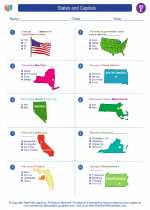Cartography
Cartography is the study and practice of making maps. It involves the representation of geographical information on a flat surface in a way that accurately reflects the real world. Cartographers use a combination of science, art, and technology to create maps that are useful for a variety of purposes, including navigation, urban planning, and environmental analysis.
Key Concepts
- Map Projection: Cartographers use different methods to project the Earth's three-dimensional surface onto a two-dimensional map. These projections can distort the size, shape, or scale of geographical features.
- GIS (Geographic Information Systems): Modern cartography often involves the use of GIS software to collect, analyze, and visualize spatial data. GIS allows cartographers to create interactive and layered maps for in-depth analysis.
- Topographic Maps: These maps represent the natural and human-made features of the Earth's surface in detail. They are used for activities such as hiking, surveying, and land use planning.
- Historical Maps: Cartography also includes the study of historical maps, which provide valuable insights into the ways in which people have perceived and represented the world throughout history.
Study Guide
Here are some key points to remember when studying cartography:
- Map Elements: Understand the basic elements of a map, such as scale, legend, compass rose, and title.
- Map Projections: Learn about different types of map projections and their advantages and limitations.
- GIS Software: Familiarize yourself with the use of GIS software for creating and analyzing maps.
- Topographic Maps: Study the features and uses of topographic maps, including contour lines, elevation, and relief.
- Historical Maps: Explore examples of historical maps and consider how they reflect the knowledge and perspectives of the people who created them.
By understanding these concepts and studying the key points, you can gain a comprehensive understanding of cartography and its significance in representing the world around us.
.◂Social Studies Worksheets and Study Guides Fifth Grade. States and Capitals
Study Guide States and Capitals
States and Capitals  Worksheet/Answer key
Worksheet/Answer key States and Capitals
States and Capitals  Worksheet/Answer key
Worksheet/Answer key States and Capitals
States and Capitals  Worksheet/Answer key
Worksheet/Answer key States and Capitals
States and Capitals 

 Worksheet/Answer key
Worksheet/Answer key
 Worksheet/Answer key
Worksheet/Answer key
 Worksheet/Answer key
Worksheet/Answer key

The resources above cover the following skills:
Geography: A student should be able to utilize, analyze, and explain information about the human and physical features of places and regions. A student who meets the content standard should:
Understand that a region is a distinct area defined by one or more cultural or physical features.